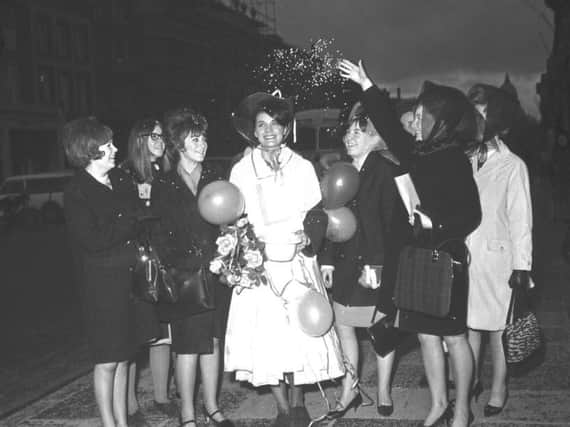The lost Scottish wedding custom of a "show of presents"


Curtains would be taken down and washed and sometimes even new furniture bought for the 'show of presents' when friends, family, colleagues and neighbours would come to see a display of all the wedding gifts received.
The women-only custom was common in Scotland for generations with it dying out in the 1980s when brides started to prefer something a little more private.
Advertisement
Hide AdAdvertisement
Hide AdDr Yvonne McFadden, social and cultural historian, said: "It was very important in terms of displaying what you had. You were on display and your house was on display. People came in to have a nosey and to see what you had.
Dr McFadden said the presents were usually laid out in a bedroom for the guests to look at.
She added: "That is obviously quite a private space. The presents covered every surface from the dressing table to the top of the bed and the bride and usually her bridesmaids would take them in for a look.
"There would sometimes be little cards laid out to say who had bought what.
"After that, guests would then be taken into the front room, or the good room of the house, and tea was served. Sometimes there would be sherry but not every house would have alcohol."
Dr McFadden researched the 'show of presents' as part of her thesis on post-war homes in suburban Glasgow.
She said the ritual helped young people build a home from scratch, with big items - such as carpets and dining suites - bought by close members of the bride's family. Tea towels and salt and pepper shakers were popular "wee minds" dropped off by neighbours and work colleagues.
From the 1950s onwards, new shiny electrical goods, such as food processors and toasters, were popular.
Advertisement
Hide AdAdvertisement
Hide AdDr McFadded, a committee member added: "One woman I spoke to still had the dining room suite she received from her mother-in-law. She never particularly liked it but didn't want to get rid of it as she thought her mother-in-law would haunt her.
"There were lots of multiples of smaller presents received. One woman remembers getting 14 sets of salt and pepper shakers.
"Another woman remembers getting two duvets. Before duvets, people just used heavy sheets. A duvet was the height of modern bedding."
There was an etiquette as to how long you stayed at the "show of presents" and that really depended on the status of your relationship with the mother of the bride and the bride.
"Some people only really stayed half and hour," Dr McFadden said.
"One person I spoke to remembers that, after the show of present, the bride was taken into the streets with people banging pots and pans around her and then singing songs," she added.
"So you had this quite formal ritual that turned into a bit of a party afterwards."
The ritual fell out of favour during the 1980s, Dr McFadden said.
Advertisement
Hide AdAdvertisement
Hide AdShe said earlier research suggests that brides started to dislike the public nature of the display with the event sometimes triggering a sense of tension between mother and daughter.
But for years, the show of presents was an important pre-wedding ritual that bonded communities, families - and importantly set up young couples moving into their first home together.
"It think it was something people enjoyed. The overwhelming feeling was that people were just so grateful that people had been so kind. One woman remembered writing 150 thank you notes. There was a real gratitude that people have thought of you and spent money on you," Dr McFadden said.
Dr McFadden will speak about her research at Studio Pavillion, House For An Art Lover, Glasgow on August 27.
